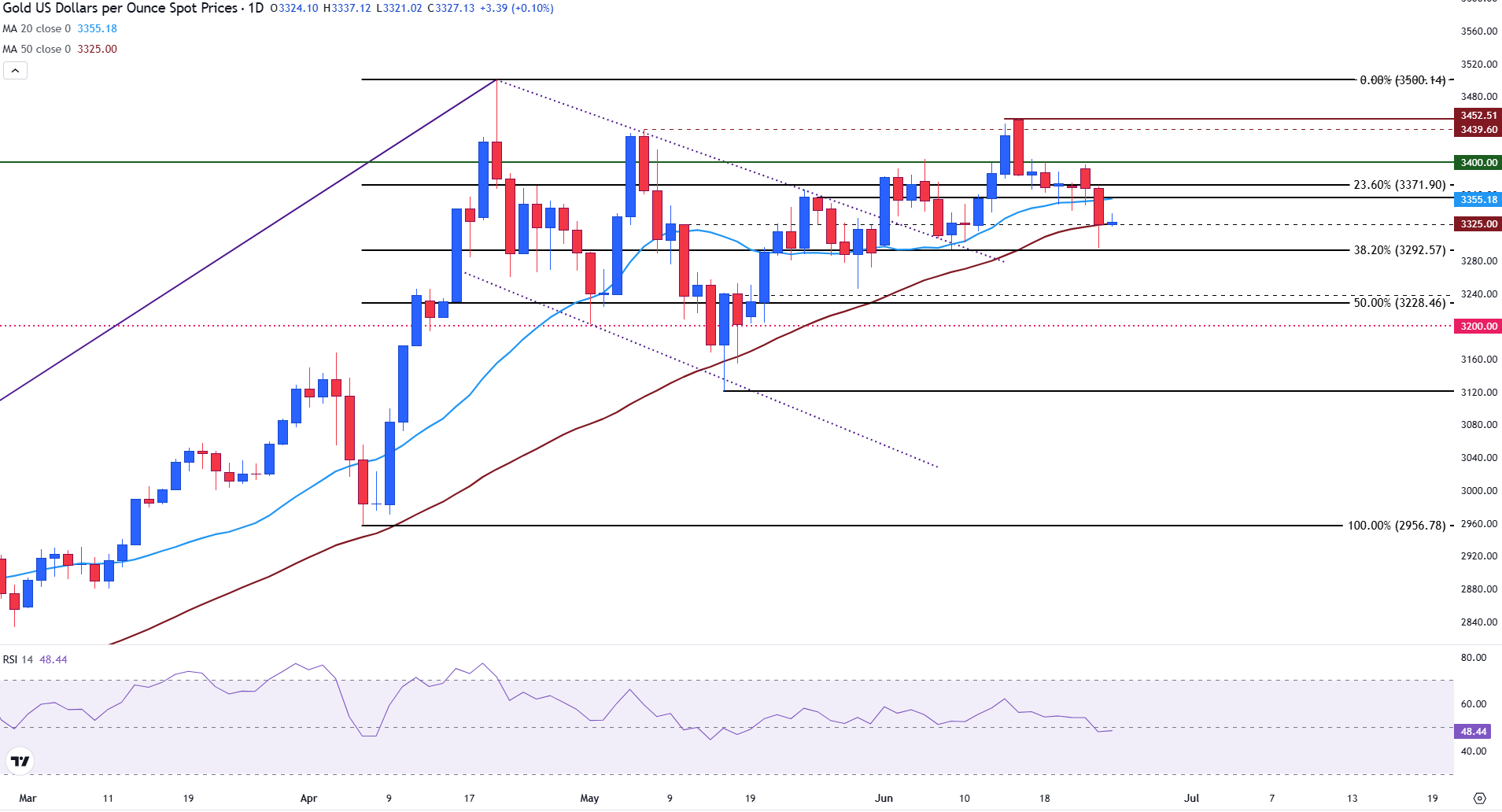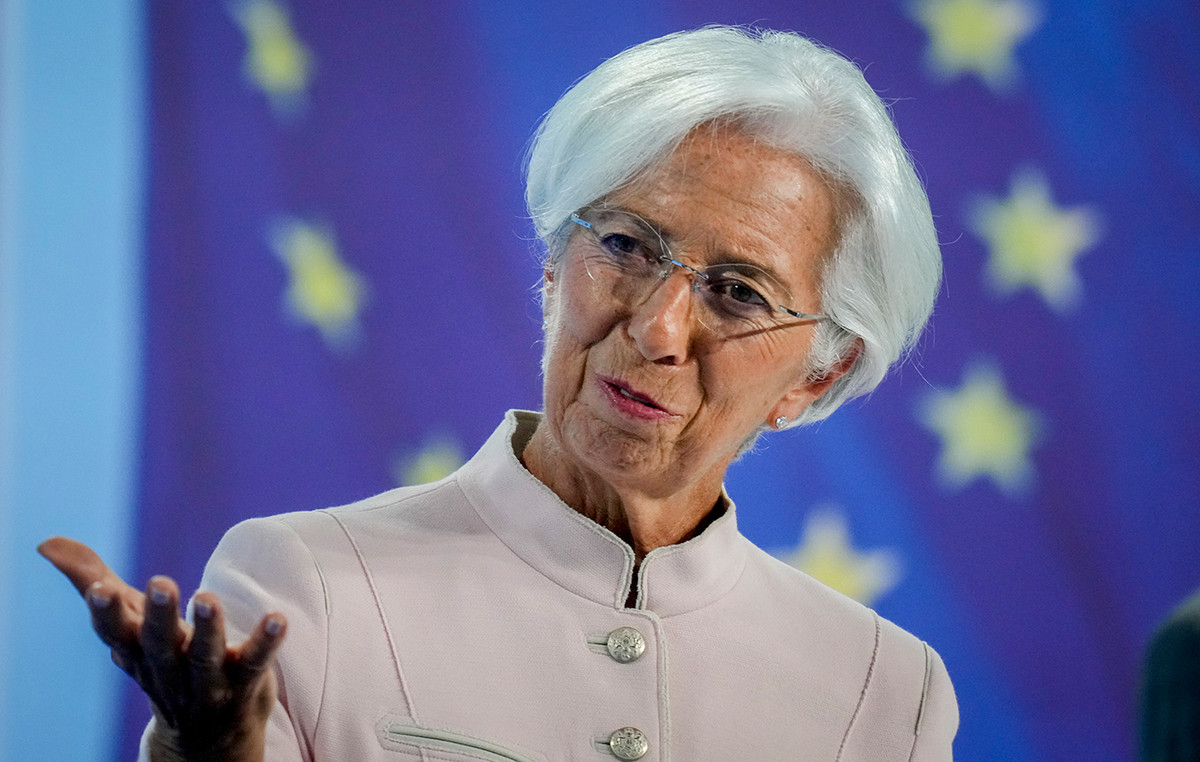- Gold remains stable while markets expect the publication of sales data of new homes in the US to obtain additional clues about the health of the US economy.
- The president of the FED, Powell, is expected to testify before the Senate Banking Committee, providing additional information on monetary policy, inflation and interest rates, factors that could serve as an additional catalyst for gold.
- Xau/USD is stabilized above $ 3,300 after a three -day running streak, with the appetite for the risk limiting short -term profits.
Gold (Xau/USD) is quoting within a narrow range on Wednesday, since markets continue to show signs of optimism after the high Tuesday’s fire between Israel and Iran.
At the time of writing, the gold remains above $ 3,300 during the European session, with volatility remaining contained. The market approach is now in the key macroeconomic publications of the US and the second day of testimony of the president of the Federal Reserve, Jerome Powell.
With the tensions in the Middle East seem to remain contained, Wednesday’s economic data and Powell’s comments could serve as an additional catalyst for gold.
The sales data of new homes in the US for May, scheduled for 14:00 GMT, could serve as an additional catalyst for the price of gold. This report provides clues about how strong the housing market seems to be maintaining in the US.
Meanwhile, Jerome Powell returns to the Capitol to speak before the US Senate Committee on Banking, Housing and Urban Affairs, where any change in the tone or mention of inflationary risks could affect the assets sensitive to interest rates, including gold.
Daily summary of market movements: Gold price promoters, Fed expectations, sight risks
- The president of the Federal Reserve, Powell, continues his two -day testimony before Congress on Wednesday, after his appearance before Congress the previous day, during which he answered questions about the economy, inflation and the possible moment of feat cuts. For gold, which moves inversely to interest rates and the US dollar, Powell’s comments are particularly influential.
- Powell reiterated that the Fed does not have “hurry to cut rates”, noting that inflation data has been unequal and that price -related price pressures will probably appear in the June or July data.
- Powell’s tone remained consistent with the meeting of the Federal Open Market Committee (FOMC) of June 18, where those responsible for the policy project two rates cuts in the second part of the year. Despite that, market participants remain divided over the moment and certainty of these cuts, with prices even being sensitive to incoming data.
- Powell also added: “If it turns out that inflationary pressures are held contained, we will reach a place where we cut rates sooner rather than later, but I would not want to point out a particular meeting.” He clarified that a significant deterioration in the labor market would also affect the decision making of the Fed, but emphasized: “We do not need to hurry because the economy is still strong, the labor market is strong.” This underlines the data dependent position, keeping the gold sensitive to the incoming figures.
- The US consumer confidence data published on Tuesday added to that uncertainty. The Conference Board Conference Conference Index fell to 93.0 in June, from 98.4 in May. A more cautious consumer perspective could imply a weaker expense in the future, which could affect Fed growth projections and influence at the time of interest rates settings.
- The geopolitical risk has decreased for now, with the high fire between Israel and will be maintained for the second consecutive day. While the situation is still fragile, the lack of new climbs has diverted the safe refuge flows, putting more emphasis on macroeconomic and policy factors for direction.
- Looking forward, the publication of the US Personal Consumption Data (PCE), the Fed’s favorite inflation indicator, will be critical on Friday. A weak fact could rekindle the expectations of a short -term rates cut and offer a new impulse for gold.
Technical Gold Analysis: Xau/USD cling to the 50 -day SMA above $ 3,300
The price of gold is currently quoting above the level of key psychological support of 3,300 $, with the indicator of the Relative Force Index (RSI) flattening near the 50 mark in the daily chart, which suggests a lack of impulse and indecision among the operators.
At the time of writing, the Xau/USD has stabilized around the single mobile (SMA) average of 50 days at $ 3.325.
Daily Gold Graph (Xau/USD)

In order for the price to extend its recovery, a movement is required above the 20 -day SMA at $ 3,355. If the bulls manage to overcome this barrier, the next level of resistance will probably reside at the psychological level of 3,400 $.
However, if the appetite for risk improves, demand for safe shelters could continue to decrease in the short term. If the price of gold faces a deeper setback below the round level of $ 3,300, the midpoint of recovery from the minimum of April 7 to the maximum of April 22 (the level of fibonacci setback of 50%) could come into play as a support at $ 3,228.
FAQS GOLD
Gold has played a fundamental role in the history of mankind, since it has been widely used as a deposit of value and a half of exchange. At present, apart from its brightness and use for jewelry, precious metal is considered an active refuge, which means that it is considered a good investment in turbulent times. Gold is also considered a coverage against inflation and depreciation of currencies, since it does not depend on any specific issuer or government.
Central banks are the greatest gold holders. In their objective of supporting their currencies in turbulent times, central banks tend to diversify their reserves and buy gold to improve the perception of strength of the economy and currency. High gold reserves can be a source of trust for the solvency of a country. Central banks added 1,136 tons of gold worth 70,000 million to their reservations in 2022, according to data from the World Gold Council. It is the largest annual purchase since there are records. The central banks of emerging economies such as China, India and Türkiye are rapidly increasing their gold reserves.
Gold has a reverse correlation with the US dollar and US Treasury bonds, which are the main reserve and shelter assets. When the dollar depreciates, the price of gold tends to rise, which allows investors and central banks to diversify their assets in turbulent times. Gold is also inversely correlated with risk assets. A rebound in the stock market tends to weaken the price of gold, while mass sales in higher risk markets tend to favor precious metal.
The price of gold can move due to a wide range of factors. Geopolitical instability or fear of a deep recession can cause the price of gold to rise rapidly due to its condition of active refuge. As an asset without yield, the price of gold tends to rise when interest rates lower, while the money increases to the yellow metal. Even so, most movements depend on how the US dollar (USD) behaves, since the asset is quoted in dollars (Xau/USD). A strong dollar tends to keep the price of gold controlled, while a weakest dollar probably thrusts gold prices.
Source: Fx Street
I am Joshua Winder, a senior-level journalist and editor at World Stock Market. I specialize in covering news related to the stock market and economic trends. With more than 8 years of experience in this field, I have become an expert in financial reporting.







